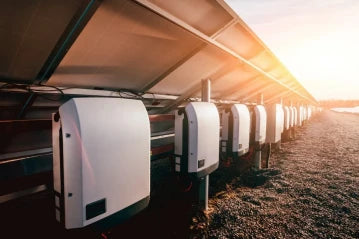
Are you considering harnessing the power of the sun to light up your home and reduce your carbon footprint? Solar energy is an eco-friendly and sustainable way to power your life, and a crucial component of any solar energy system is the battery that stores excess energy for use when the sun isn't shining. In this blog post, we'll dive into the world of solar 200Ah batteries, exploring how many hours of backup power they can provide and what factors may influence their performance. So, sit back, relax, and let's embark on this enlightening solar energy journey together!
Unraveling the Magic of Solar 200Ah Batteries
When you think of solar power, chances are you picture solar panels soaking up the sun's rays to generate electricity. While this is true, the power generated during sunny hours often exceeds the immediate demand. Here comes the hero of the story - the solar 200Ah battery. These batteries are the backbone of an efficient solar energy storage system, enabling you to use the electricity generated during the day at night or during cloudy weather.
A 200Ah battery refers to its capacity, and the "Ah" stands for ampere-hours, representing the amount of energy a battery can store. With a capacity of 200Ah, these batteries can store a substantial amount of electricity, providing ample backup power when needed.
How Long Will Your Solar 200Ah Battery Last?
Now, let's get to the pressing question - how many hours of backup power can you expect from a solar 200Ah battery? The answer is not as straightforward as you might think. The backup hours depend on various factors, including your energy consumption, the number of connected appliances, and the battery's depth of discharge (DoD).
DoD refers to the percentage of the battery's total capacity that is used before recharging. For example, if you discharge 50% of a 200Ah battery's capacity before recharging, you have utilized 100Ah (50% of 200Ah). It's essential to be mindful of DoD as frequent deep discharges can shorten the battery's lifespan.
To calculate the approximate backup hours, you need to consider your daily energy consumption and the average energy generated by your solar panels per day. Divide the battery capacity (200Ah) by your daily energy consumption (in Ah) and then factor in the DoD.
Backup Hours = (Battery Capacity / Daily Energy Consumption) (1 - DoD)
Factors Influencing Backup Hours
Several key factors can influence the backup hours provided by your solar 200Ah battery. Understanding these factors will help you optimize your system and make the most of your investment:
1. Energy Consumption: Your daily energy consumption is a significant determinant of backup hours. If your household consumes a higher amount of energy, your battery will be depleted more quickly during power outages. To maximize backup hours, consider energy-efficient appliances and lifestyle changes.
2. Solar Panel Performance: The effectiveness of your solar panels in converting sunlight into electricity plays a crucial role. On cloudy days or in regions with limited sunlight, solar panel performance may decrease, affecting the amount of energy available for storage.
3. Climate and Weather: Climate and weather conditions in your area impact solar panel efficiency. Locations with more sunny days can store excess energy in the battery, leading to longer backup hours.
4. Battery Health and Age: The health and age of the battery directly affect its capacity to store and deliver electricity. Regular maintenance and proper care can prolong the battery's lifespan and maintain its backup hours.
5. Inverter Efficiency: The inverter is responsible for converting direct current (DC) stored in the battery to alternating current (AC) for household use. An efficient inverter ensures minimal energy loss during the conversion process.
Conclusion
Congratulations, solar enthusiasts! You're now equipped with the knowledge to navigate the world of solar 200Ah batteries and make informed decisions. Remember, these batteries are a vital part of your solar energy system, providing you with hours of backup power to keep your home running smoothly, even during outages.
As you embark on your solar energy journey, be sure to assess your energy needs, consider factors like climate and battery health, and aim for an optimum DoD to maximize the longevity of your battery. Always seek advice from reputable solar energy providers to tailor a system that suits your requirements.
So, let's go forth and embrace the power of the sun with our solar 200Ah battery, lighting up our lives while treading lightly on our planet! Happy solarizing!

0 comments